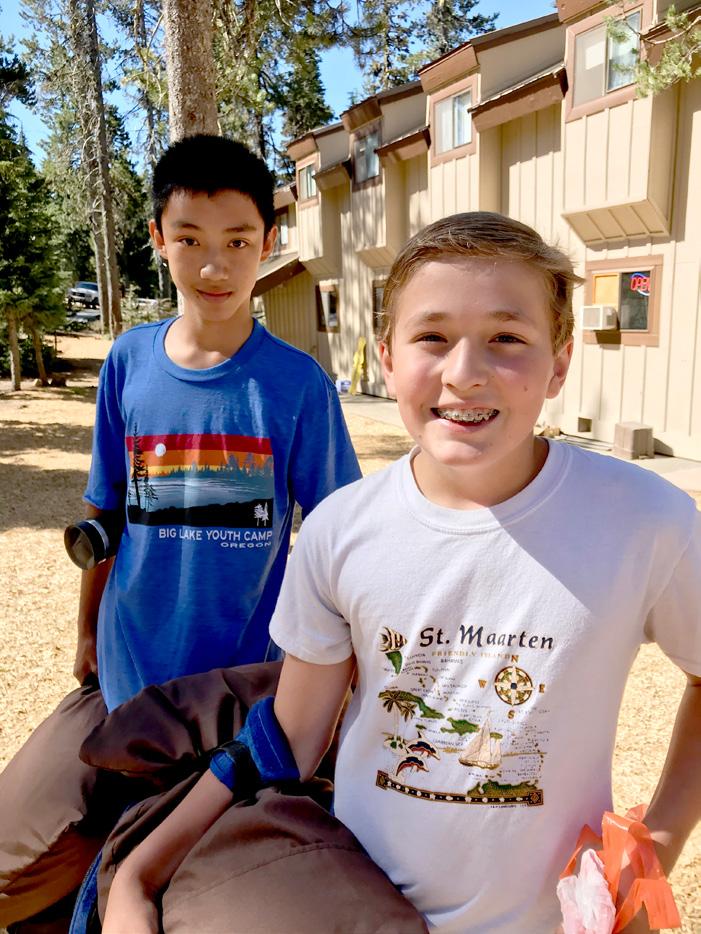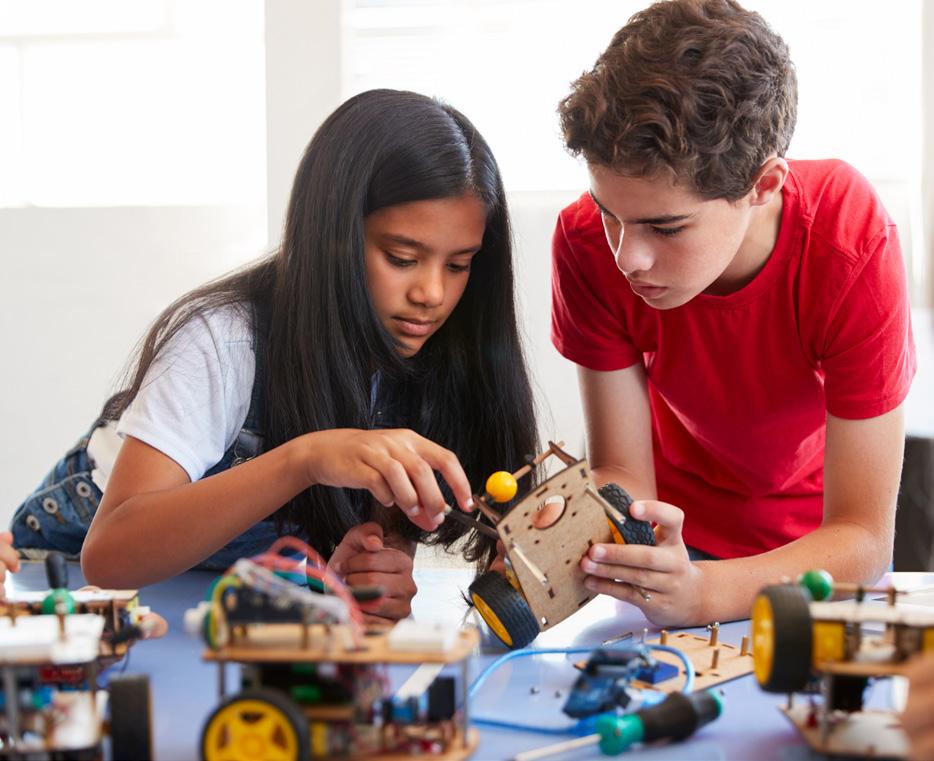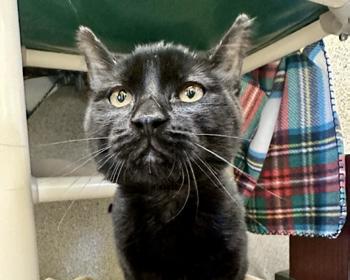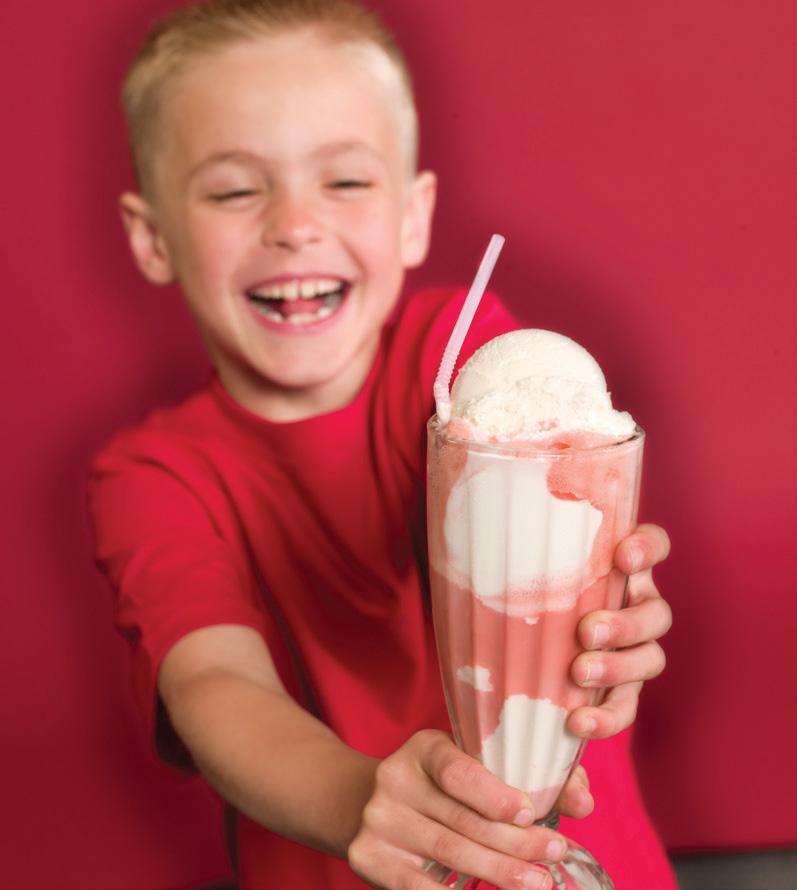

































1. RICK EPSTEIN
A Dad’s Eye View contributor, also award-winning columnist, and journalist. Author of Rookie Dad (Hyperion) and The Right Number of Kids (McKenna Publishing Group). His wife and three daughters run a living laboratory in which he is constantly tested, analyzed, and experimented upon. It’s as if a guinea pig could write.
2. EMILY FORSHA
Emily Forsha is the Vice President of Integrated Marketing at Travel Lane County, a non-profit organization supporting and promoting the Eugene, Cascades & Coast region as a visitor destination. Emily and a team of content creators manage a comprehensive destination website for Lane County, publishing trip information and inspiration on where to go and what to do at EugeneCascadesCoast.org.
3. BONNIE HARRIS
Bonnie is Oregon Family Magazine’s resident Movie Review Master Extraordinaire. She enjoys watching movies of all kinds, and has been doing movie reviews for over 9 years and counting. She lives in Eugene with her family, enjoys gardening and cooking.
4. SARAH LYONS
Sarah Lyons is a writer and proud mom of six, including six year old triplets. In her limited free

time, she enjoys reading, writing, cooking, and spending time outside.
5. KERRIE MCLOUGHLIN
Homeschooling mom of five, serial volunteer, and freelance writer, Kerrie enjoys teaching, traveling, and creating anything related to words. She loves to share her hacks and helps from being a mom for 23 years. You can find her online at The Published Parent. Current great-grandmother to nine Aussie puppies and basketball mom.
6. SANDI SCHWARTZ
Sandi Schwartz is an author, journalist, and mother of two. She has written extensively about parenting, wellness, and environmental issues. Her new book, Finding Ecohappiness: Fun Nature Activities to Help Your Kids Feel Happier and Calmer, comes out in the spring. Learn more at www.ecohappinessproject.com.
7. RODDY SCHEER
Journalist and photographer specializing in environmental issues, the outdoors and travel. When he is not out in the field taking pictures, Roddy runs EarthTalk, the non-profit Publisher of the syndicated EarthTalk Q&A column and the EarthTalk.org and Emagazine 1 6 2 3 4 5
Oregon Family Magazine is distributed monthly in the greater Lane County area at over 150 high-traffic commercial locations.
Parents Publishing
Kauten
DESIGN/LAYOUT
Design & Illustration
Email: info@oregonfamily.com Web: www.oregonfamily.com Facebook: www.facebook.com/OregonFamily

FAMILY OWNED AND OPERATED SINCE 1993
Opinions expressed by contributors or advertisers are not necessarily the opinions of, nor an endorsement by this publication.
© 2025 Pacific Parents Publishing. All rights reserved. No part of this publication may be copied or reproduced without prior expressed written consent from Pacific Parents Publishing.
— PETER B., GROTON, CT
MUSIC GEAR production, from collecting materials, producing gear and packaging with excessive plastic, has numerous negative environmental effects. Collecting wood has led to overharvesting at an unsustainable rate, an increasingly urgent issue for forests and woodlands. Plastic and metal waste have risen, too. These issues have led many music gear makers to implement sustainable changes.
The good news is that some instrument producers have begun harvesting wood from dead or dying trees to prevent the overharvesting of rich woodlands, while others have shifted toward lessused “alternative tonewoods” like basswood and kaya. To decrease metal waste in sourcing for strings, makers are beginning to purchase strings in the form of rods.
commonplace to find bioplastic or even shell for guitar picks and vegan leather for straps. String company Stringjoy now has a recycling program, encouraging
an entirely new set of guitar strings when only one needs a replacement.
Together these changes have led to a plethora of significant

players to mail back old strings to repurpose the material.
Small changes are also happening in the production are. Manufacturers have replaced traditional materials with eco-friendly options when producing the picks, straps and other accessories. It is now
When packaging manufactured goods, music gear makers have begun using paper tape, boxes and envelopes over the traditionally used plastic. Unique innovations have also made packaging greener, such as color-coding each guitar string and its packaging to avoid the environmentally harmful practice of purchasing
positive outcomes. Increased use of alternative wood sources has caused a notable decrease in pressure on certain wood species commonly used for instruments like mahogany, rosewood and spruce. Moreover, changes made in packaging and material collection have reduced the vast amounts of plastic and metal waste from entering landfills or oceans. Exemplified by the color-coded guitar strings,
unique innovations have also made an impact, with the director of product management at music instrument company D’Addario, Brian Vance, commenting that colorcoding has eliminated total packaging mass by 70 percent. More can still be done. Companies advocate for government policies cementing environmentally friendly decisions made by manufacturers, or work toward simpler changes by implementing more recycling programs for their customers. Ultimately, strategic efforts have significantly boosted the sustainability of music gear production, proving that these efforts must be continued and expanded. ✦
CONTACTS: The rise of sustainable guitars, frontiergroup.org/articles/the-riseof-sustainable-guitars-how-an-industry-isinnovating-to-save-our-forests
EarthTalk® is produced by Roddy Scheer & Doug Moss for the 501(c)3 nonprofit EarthTalk. See more at https://emagazine. com. To donate, visit https://earthtalk.org Send questions to: question@earthtalk.org

[

BY SANDI SCHWARTZ
going to a silent retreat is on my bucket list. It seems like the ultimate way to reach a mindful, relaxed, and introspective state. Science indicates that silence can be beneficial to us in so many ways, as it impacts our physical, mental, and emotional health.
Given our increasingly loud lives with technology constantly buzzing in our ears, how can we give our children the gift of silence to make them happier and healthier?
Noise pollution is considered a serious concern throughout the world. The World Health Organization ranks it as the second most critical environmental challenge after air pollution because excessive noise can seriously harm human health and interfere with people’s daily activities. It can disturb sleep, cause cardiovascular and other physiological effects, reduce performance, and lead to changes in social behavior. As the world gets louder, we may be able to cope a little bit; however, our evolutionary biology has not kept up with the rapid technological innovation.
Physiological. Sudden jarring noises cause the body to produce cortisol, the fight-or-flight hormone that causes us to feel stressed and anxious. Some studies show how chronic exposure to levels of sound greater than 50 to 55 decibels can boost these stress hormones and increase blood pressure, hypertension, and heart rate.
Psychological. Sounds can change our mood. Constant or loud noises can shift our mood from happy and calm to stressed and irritated. When we are surrounded by these intrusive noises all the time, the impact can add up and crush our spirit.
Cognitive. The brain has a huge storage space, but amount of noise that it can process is relatively limited. When we are bombarded by noises, it can impact our ability to focus and think clearly. Research shows that children studying in schools under flight paths have reading skills several months behind their peers in quieter places, simply because they are unable to hear well.
Behavior. Loud noise can lead to changes in how we act. We tend to move away from sounds that we do not like or that feel uncomfortable to us. In a recent experiment at a shopping center, speakers playing loud pop music were set up at one end of a store and calm, ambient music was played at the other end of the store. The results showed that many shoppers physically moved away from the pop music speakers. Sound, therefore, can impact decisions that we make in our lives. What is most alarming is that researchers have noticed that children have become so used to constant noise that they are actually uncomfortable


without it. Noise, essentially, has become a crutch for our children. This has led to habits like coming home and immediately turning on the television or iPad.
The best remedy for all of this noise is very simple—silence. Being silent may sound like an odd concept, but more research comes out every day highlighting the importance of quiet time for both us and our children.
Silence has a calming effect. It settles the many emotions that are activated by talking and listening. As our mental and emotional lives calm down in this quiet space, our bodies can relax. In a group of studies on silence for the magazine Nautilus, it was noted how participants were most relaxed during the moments of silence between pieces of relaxing music as opposed to during the music itself. We need silence to bring us back to the present moment, helping us to calm down and not worry about what happened in the past or what may happen in the future. Silence is a wonderful way for us to take a step back, find peace, and recharge.
Silence also helps us more effectively connect to the world around us. Essentially, all of our senses are heightened when we are silent. We may notice sounds that we never did before, and view our surroundings with a fresh perspective. For example, we may notice how loud the traffic is from our backyard or how beautiful the birds are singing as we wake up in the morning.
Being able to hear more easily allows us to have greater clarity and helps us make better decisions, especially ones that we have been
struggling with. Silence reduces the mental chatter that distracts us from being able to think clearly and to truly be in touch with our own thoughts and feelings.
Silence may also be good for our brain. In 2013, biologist Imke Kirst conducted an experiment in which she exposed four groups of adult mice either to various sounds or to silence to find out if it affected them. She discovered that the mice kept in silence were the only group that developed new brain cells. These cells were in the part of the brain connected to memory, emotion, and learning. Although these results have not yet been duplicated in humans, this study offers some insight into how our brain may change due to silence.
The best way to combat the excessive noise our children are exposed to everyday is to teach them how to create a quieter environment around them. Here are 10 ways that you can bring more silence into your children’s lives.
• Be a positive role model to your children. This means keeping your home free of excessive noise and showing your kids that you take time out of your busy day for quiet moments, such as meditation.
• Turn the television off when nobody is watching it. Do not use it as a background noise filler, especially when you are eating as a family and when your children are doing homework.
• Work on positive behavior shifts, which include limiting computer time, television time, cell phone time, tablet time, etc.
• Offer ear plugs or noise-reducing headphones to your children if they are bothered by noise or just need to tune out sounds when they are having quiet time.
• Set aside quiet meditation time for your children, such as right after school to provide a break from their busy day before they jump into homework or extra-curricular activities.
• Make an effort to drive your children to and from school without the radio blaring. This allows everyone to have a moment with their thoughts before and after their hectic day.




• Go for a nature walk to quietly enjoy the beauty around you. Challenge your children to be quiet so they can listen to all the natural sounds around them, such as the rustling of leaves and birds chirping.
• When you go for a long drive in the car, spend some of that time in complete silence. This will promote looking out the window to soak up the world passing by.
• Create a quiet zone in your home where children can go to when they feel like they need some silence. This can be a floor pillow in a corner of a playroom or bedroom where there are books and stuffed animals to comfort them as they recharge.
• Teach your children stillness techniques like yoga, tai chi, chi gong, and breathing exercises. ✦

BY EMILY FORSHA

2016 U.S. OLYMPIC TEAM
Trials - Track & Field, my family was taking a break at the fan festival when I suddenly realized we were sitting next to the legendary Frank Shorter, an Olympic gold medalist who was Steve Prefontaine’s training partner. Frank kindly signed my son Eli’s ticket, writing “The best of luck with your running, Eli!”
Those words have spent more than 10 years pinned on his bulletin board, next to bib numbers, race flags, finish line tape and other mementos he’s collected from track and field events where he’s participated as an athlete, fan and volunteer.
Growing up in Eugene means also growing up in TrackTown – and for kids especially, there are a lot of opportunities to inspire a lifelong love and appreciation for the sport. This year, track fans of all ages can experience an incredible season of events at Hayward Field. High school athletes from across the nation compete at the 20th annual Oregon Relays on April 4-5, followed by collegiate competition at the Oregon Open on April 18-19. The momentum continues as the University of Oregon hosts both the Big Ten Outdoor Championships and the NCAA DI Outdoor Championships, giving local families plenty of chances to watch high school, collegiate and pro athletes compete at our legendary stadium.
All this excitement leads into the 50th edition of the Prefontaine Classic on July 5, where you can watch competition between top elites from around the world. Warm up for the big event with Eugene’s iconic Butte to Butte, an Oregon Track Club event and beloved annual family 4th of July tradition.


Young runners ages 2-12 can experience the thrill of finishing on Hayward Field by participating in the Eugene Marathon Duck Dash, a 1 kilometer race held on April 26, the day before the marathon. Beginning in May, kids can sign up for the Oregon Track Club’s Youth Track & Field program to run, jump and throw at practices twice weekly before trying out their new skills at OTC’s All Comers Meets. A summer tradition since the 1950s, All-Comers meets are split over two days so that kids 12 and under can compete separately with their own age groups in a low-pressure, fun environment. In the fall, the OTC Youth Cross Country program keeps kids moving — practices and races are short and focused on having fun, with the goal always being to keep kids having a good time.
Kids in 8th grade and younger can sign up for a free membership to the TrackTown USA Kids Club, which includes perks like early ticket access, free admission to some of the track meets at Hayward Field, and the exclusive opportunity to be a Youth Buddy at The Prefontaine Classic. Club members also receive an official Kids Club passport to collect stamps and autographs throughout the season no matter where they are based – parents can submit for virtual stamps throughout the season. Those stamps can be redeemed for items like water bottles and t-shirts to show off their track & field fandom.
Track and field is one of the most approachable, inclusive, supportive and fun sports for kids. It’s often a no-cut sport in schools, and welcomes kids of all abilities who have goals ranging from wanting to run fast to simply wanting to be a part of a group. Our local running clubs offer chances to engage as an athlete, a fan or a volunteer. How lucky we are to raise our kids in TrackTown! ✦


















BY KERRIE MCLOUGHLIN
MAYBE THE THOUGHT hasn’t crossed your mind that your teen might need to find a fun summer camp. Your teen should be babysitting, mowing lawns, working at the pool, hanging around with friends, right? Well, sure! But why not send teens off for a week or more of summer fun and learning this year for a break? Here are nine great benefits for teens attending summer camp:
1
GIVING BACK. Community service camps offer a great chance for your teen to make a difference and help out in the community while also learning skills that will carry them through their life. Kids get to spend their days helping others, which just feels good to everyone involved. Maybe your teen will learn how to pack food for the homeless, teach kids how to read, or

work on a project that will benefit the community, like cleaning up a playground or fixing equipment. They could even learn how to paint a house, care for a yard for an elderly person who is unable to do so anymore, or they may even learn how to plan and build a house for someone who is in need.
2
MAKING NEW FRIENDS. It’s important to continue to grow and change, and adding new friends to one’s life enriches it at any age. Some teens attend the same camp or camps every summer and might find the same friends there year after year. Many are attending for the very first time and

need to hone their social skills to make new friends and get to know other kids in their age range outside of a school setting. Being in close proximity for days or weeks helps kids get closer, faster.

3
LEARNING NEW THINGS YOU CAN’T FIND IN A TEXTBOOK. Whether your teen attends a camp to learn more about horses, adventure, or a specific sport — or any other type of camp — they have an entire day, week, or longer to focus on that one activity and really immerse themselves in it. Who knows? Your teen might find a new passion that he never thought of before that could be helpful in his educational or work life later on down the road.
4 DEVELOPING A HOBBY. When your child is unplugged from the TV, video game player, smartphone, etc., they can really focus on developing a hobby in a creative way. It seems like these days there’s a camp for pretty much any interest your kid has. There are camps for horse and other animal lovers, sports lovers of all types (think developing soccer skills, swimming, football, volleyball, baseball — anything!), Boy Scout camp (covers so many different hobbies and topics), Girl Scout camp (also covers so many great skills) … the list goes on!
5 WORKING AS A TEAM. Your child will be meeting kids of different ages and from different backgrounds. Learning how to get along and work as a team is a huge life skill that will be reinforced at camp. Some camps even have kids do team-building and trust activities to help them get to know each other.
6 STAYING ACTIVE. Forget sitting around doing “screen time” all day long during the summer with a bag of Takis or Funyuns close by! When a teen attends summer camp, they often forget all about those things and focus on having fun with their friends going on hikes, paddle boating, swimming, and more, depending on the camp they choose. Bonus points for activity if your child chooses a camp targeted to a sport they’re passionate about.
7 STANDING ON THEIR OWN. Let’s face it: As our kids get older, they start to grow away from us. They are simply preparing to head out on their own, and they are also preparing you for that by perhaps being a little distant. They are stuck in between childhood and adulthood, and it’s a confusing

time. Going away to camp for even a short period of time helps teach independence. There is a daily structure at camp that’s already in place that teens need to follow. Parents aren’t the ones doing the nagging, so teens don’t tune it out and they learn to respect and learn from other adults.
8 APPRECIATING EVERYTHING.
Away from screens (yes, I keep focusing on this one), it’s easier to focus on nature, learning, forming relationships and more. Being away from parents, kids will come home with a new appreciation for what it takes to be in a family and what it takes to help out in the running of the household. Your teen will probably also appreciate funny things, like a full pantry that’s open all day, a comfy bed, and privacy!
9 DEEPENING THEIR FAITH. If your teen enjoys activities with youth groups at church, synagogue, or mosque, an organized religious camp might just be the ticket. The day might begin with a service, followed by breakfast, a hike, and then some time spent in the cabin with friends memorizing scriptures for a competition at the end of the week. Later there could be singing songs around a bonfire while roasting s’mores. The point is that making connections based on their faith can create strong bonds.
Teen summer camp has so many benefits that cover all the bases, from physical, social, mental, and spiritual. As for the rest of the summer? Well, your teen can spend plenty of time doing those odd jobs to help pay for camp next year! ✦



BY BONNIE L. HARRIS
OSCAR
always gives us a chance to see films that we might not otherwise appreciate if it weren’t for the lure of that elusive golden statue. The incredible animated featured called Flow, produced and distributed by an international cohort and attributed to Latvian filmmaker,
Baltic Content Media Rated: PG In theatres & Streaming on Amazon
Gints Zilbalodis, is truly one of those gems. It’s also the front runner for Best Animated Feature and is nominated for Best International Feature. The movie without spoken dialogue follows a demur cat, a dog, a capybara, a lemur, and a bird on a journey of survival in a make-believe world overcome by a great flood. But just because it’s animation, doesn’t mean it’s entirely for children, and I’ll admit, there were some very anxious and terrifying moments that set me on edge. Flow is spectacularly wonderful, subtly colorful, and entirely

mesmerizing, but it’s the type of entertainment that younger viewers might not understand the first time around. However, it’s also the type of film that presents a unique opportunity to discuss why the lifesaving boat must be shared by all the animals, why the whale saves the cat, why the bird helps the lemur, why the cat learns to fish, and why the dog saves the capybara. Throughout the sometimes harrowing journey, each character reveals their inner
Focus Features, Rated: PG Streaming on Amazon
MOVIES NOT ONLY entertain, but they can also reveal lifestyles and uncover institutions that we might never see in real life. Conclave, directed by Edward Berger and nominated for Best Picture, plunges into the world of the Vatican and shines a light on the ancient practice of choosing a new Holy Father. As Cardinal Lawrence, played brilliantly by Ralph Fiennes, discovers while he works tirelessly to manage the almost overwhelming election, priests are common men with common failings, prejudices, blind spots, and sins. What he doesn’t realize at the outset of the proceedings are the depths that these men will reach in order to be elected to the powerful office. It’s a three-day ordeal of voting, maneuvering, politicking and undercutting until a terrorist’s explosion brings the college back to its senses. I must admit, I didn’t see the Third Act twist coming, and I’m glad I didn’t read the synopsis
Looking for evidence.
strength. The shy cat becomes brave, the wise capybara protects the cat, the covetous lemur learns to share, the singular dog learns to work as a team. The bird’s journey, separate from the rest of the animals, is still a mystery that I continue to ponder. But in the end, the flood recedes and the film comes full circle in a moment of poetic wonder and the cat is no longer alone. Be sure to watch the credits to reassure the little ones that the whale is okay! ✦

beforehand. For our time and for this film, it works and is completely understandable. Overall, Conclave moves a bit slowly, but the stellar cast carries the film through and the cinematography exudes the look and feel of the holiest place on earth. Amazingly, the men who inhabit it, are often less than holy.










RECEIVING A TAX REFUND THIS year? While it can be tempting to impulse spend, if you want to really treat yourself, financial professionals recommend using the payout for practical expenses.
According to Certified Financial Planning® professionals, here are smart ways to spend your tax refund that will improve your life:
1 BUILD AN EMERGENCY FUND.
Unexpected circumstances, such as illness or job loss, can leave you with more bills and less income. Not having an emergency fund puts you at risk of having to take on high-interest debt to meet expenses. Use your tax refund to create some peace of mind for yourself and your family. And now that you’ve started the emergency fund, consider using direct deposit to funnel a portion of each paycheck into this account.
2 REDUCE DEBT. Paying down debt can feel like an insurmountable challenge. And if it’s a challenge you’ve been avoiding, you can use your tax refund to kick-start your journey. Not sure where to start? A CFP® professional can help you identify which debt to prioritize first, as well as help you craft a repayment strategy moving forward.
3 SAVE FOR RETIREMENT. No matter your age or stage in life, a tax refund offers a great opportunity to give your retirement account a boost. Thanks to compounding, the money you set aside today in an investment account, such as a 401(k) or Roth IRA, will exponentially grow between now and when it’s time to tap your nest egg.
4 SET FINANCIAL GOALS. From planning a vacation or wedding to becoming a homeowner, your goals are worth investing in. Put your tax refund toward something that matters to you.
The best thing you can do may be avoiding future refunds. While it feels great to receive a big check during tax time, a tax refund is effectively an interest-free loan you have made to the government. You’re much better off keeping more of your money throughout the year so you can invest it or use it on things you need. Consult a CFP® professional on how to adjust your withholdings to get closer to breaking even next year. With an actionable plan and the help of a qualified financial professional, you can ensure your tax refund is put to good use. ✦
For more tax season tips and to find a CFP® professional, visit LetsMakeAPlan.org.
BY RICK EPSTEIN
“WENDY!” I SAID, “What happened to your dress?” It was a cute little green-velvet
bought for our 7-year-old to wear in the school concert. Up near the nape of her neck, there was a ragged hole big enough for

into a few plainly worded ordinances. You’ll want to read these rules publicly a few times a year and keep them posted in a prominent place.
GROOMING
• Do not cut your own hair.
• Do not cut your sibling’s hair.
• Do not paint your lips with markers.
GRACIOUS LIVING
• Do not take garbage out of the compost heap and use it as doll food.
• Dead animals are not toys.
• Do not make ink out of crepe paper. (This should only be done in a tile-lined lab by trained technicians in disposable clothing.)
INDOOR LIVING
• Do not draw or write on the walls.
• Do not hang on cabinet doors.
• Never put chalk in the toilet.
• Or soap.
• Do not fill a sink with water, blow a bubble-gum bubble, float it in the water and pretend that it’s a whale and that a large needle with thread attached is a harpoon. (Sounds harmless, but everything in the room gets soaked somehow.)
• Do not put buttered bread into the toaster. (Yes, the toast it produces is unparalleled, but butter will drip down inside the toaster and just when someone is poking a fork in there, the toaster will burst into flames.)
• Do not use the dryer to defrost meat – especially hamburger.
• Do not tease dogs or cats. But when you do, protect your face.
• Do not run with scissors. (This rule is not important, because as soon as your kids are old enough to run, they will have run off with all your scissors and lost them.)
• Do not lose the scissors. (You’ll want this law on the books just in case you are the first parent ever to catch someone in the act of losing your scissors.)
• Do not play with matches.
• Do not light candles in your room.
• Do not set off fireworks in the house.
• Do not put lighted candles on the Christmas tree. I read this admonition long ago and it intrigued me that someone might be rash enough to try it. It was my favorite rule until I went to a Scandinavian Saint Lucia festival and saw something that inspires an even-better rule:
• Do not wear lighted candles on your head.
So, there it is – a body of law accumulated at great expense all ready for implementation at your house. If it seems grim and repressive, don’t worry, you’ll still have plenty of discussions like this:
DAD (with feeling): “Sally, don’t throw pillows at the lamp!”
SALLY (quizically): “DON’T throw pillows at the lamp?”
DAD: “Right!”
SALLY: “Which lamp?”✦
Rick can be reached at rickepstein@yahoo.com.
BY SARAH LYONS
IT’S NORMAL FOR KIDS TO FEEL shy around new people or situations but parents may worry their child is missing out on friendships and experiencing social situations because they are too shy to engage with others. Most reserved children maintain healthy relationships and enjoy social situations once they get over the hurdle of unfamiliarity. How can you support your shy child while encouraging them to enjoy participating in social situations?
One of the best ways to support a shy child is to put them in social situations they feel most comfortable in. If your child loves art but dislikes sports, they will be much more likely to engage with others in an


artistic environment than on a sports team. When enrolling your child in camps or attending play dates, keep in mind that they are much more likely to open up and build relationships with other kids when they are doing something they love with kids who have common interests.
Young kids may feel shy because they are unsure of how to act in social situations. You
can teach them social skills through role play. This can be done by acting out scenarios they may come across or using dolls or toys. Practice saying “Hi, my name is Avery. Do you want to play?” Go through the possible scenarios and how to respond. What would happen if the child said , “No. You can’t play.” or what would happen next if they said you can play. Going through possible scenarios will help your child feel more confident in real life situations. “I encourage my kids to

speak for themselves whenever possible.” said Amy Cameron, Olathe mom of three. “They order their own food in restaurants and tell the doctor what their symptoms are. It’s so easy to speak for them, but I actively try not to.” Encouraging your child to speak up for themselves in common situations like ordering food at a restaurant or asking a teacher for help will help them learn to advocate for themselves in the future as well.
Kids who are shy often feel more comfortable in small groups or one-on-one. You can help your child build friendships by hosting playdates with other kids. You know your child best and can invite other kids who are a good match, with common interests, and choose a location where your child feels confident. If the playdate feels awkward at first, have a few planned activities to do together and prompt your child. “Do you want to show your friend your toys?” or “Would you like to choose a board game?” or “Do you want to go outside and play on the swing set?” Chances are, the kids will begin to talk, play, and find common ground they can build a friendship on. Kids who are shy may hold back at first but that doesn’t mean they don’t desire and enjoy friendships. By helping them develop friendships, you will help them overcome their shyness in a natural way.
If your child is feeling shy at school, reach out to teachers for help. Your child’s teachers, coaches, and the other adult role models in their lives can encourage them to speak up for themselves, participate in social situations, encourage friendships, and help them feel safe as they step out of their comfort zone. Teachers can challenge shy kids to step out of their comfort zone when the time is right in a way that doesn’t seem overwhelming or forced.
As your child grows and matures, they usually outgrow their shyness. It’s also important to remember that some kids are introverted. Not every introvert is shy and not every shy child is introverted, but they do often go together. There is nothing wrong with being quiet and parents should be careful not to label or criticize their child


for feeling shy or if they are naturally an introvert. Be patient and encourage your child. When they do step out of their comfort zone, praise them for the effort.
“As a mom of an introvert who is herself an extrovert, I constantly remind myself that we don’t need the same kind of experiences to feel fulfilled.” said Shawnee mom, Kara Thomas. “It’s hard to resist the urge to push him into things that I would enjoy, I just always check in to make sure he’s enjoying life and when he needs some help, we brainstorm ways that meet what he needs.”
Shyness is often a child’s response to new or scary situations and is common in young kids. It can be the result of emotions such
as fear, anxiety, and nervousness which are often valid feelings in a new situation. Try not to force your child to be outgoing but instead, gently encourage them. If you feel your child is dealing with extreme shyness where they are unable to speak or freeze in social situations longer than age appropriate, speak to your pediatrician for tips on how to best support them.
We’re all a work in progress… as are our kids. But they are living in a fast changing world, and are vulnerable to many outside influences. Being there is the most important first step in supporting their growth, and acknowledging their differences equally important. ✦
Meet ELOISE , the sweetest pup who has so much love to give. This gorgeous 3-year-old Rottweiler mix is friendly, affectionate, playful, and beyond gorgeous! She comes off a little timid with new people but warms up quickly to a funny, outgoing pup. We adore her lovely demeanor and know with her perfect fit, she will give endless love to her family! So far, she has proven to really enjoy treats and learning basic manners. She would enjoy an outgoing family to go on long walks, runs, or any adventures with.

Eloise is a gentle girl and would do ok with kiddos. She should meet any potential dog siblings in the shelter prior to adoption and should have a slow, supervised intro to cats. Eloise is 56 lbs., and will be spayed, microchipped, and up to date on vaccines prior to adoption. Eloise is a loyal dog ready to meet her match!
Greenhill Humane Society is open seven days a week, 11 am – 6 pm at 88530 Green Hill Rd in Eugene. For more information call (541) 689.1503 or visit www.green-hill.org.

Proudly serving our family’s Lochmead products
Four of the seventeen cats who recently arrived at Greenhill after a second-alarm apartment fire in Springfield. All of the cats immediately went into emergency care to receive oxygen therapy and treatment due to eye and lung damage caused by smoke and fire. After around-the-clock care, fourteen of the cats have been released from intensive care and are receiving care for the injuries to their eyes, lungs, and paw pads caused by the smoke and fire. Chilly, Drip, Drop, and Frosty are now up for adoption and ready for a second chance while the other cats who require more care will be provided treatment and made available over the coming weeks.



Chilly is a 5-month-old longhaired mix, Drip, an 8-monthold medium-haired tabby is bonded with the 8-month-old black cat, Drop, and Frosty is a 2-year-old grey shorthair kitty. Drip and Drop are best friends and must be adopted together. All are very sweet, friendly, and affectionate, spayed/neutered, microchipped, and up-to-date on vaccines prior to adoption. Chilly and Drop are more outgoing and confident, while Drip and Frosty are a little shy. They all are looking for a calm, relaxing home to continue to heal and receive love in. All of these cats are spayed/neutered, microchipped, and up-to-date on vaccines prior to adoption.
Greenhill Humane Society is open seven days a week, 11 am – 6 pm. For more information call (541) 689.1503 or visit www.green-hill.org.

We sell our family’s Lochmead milk and ice cream at your local Dari Mart. We milk our cows just north of Junction City, and within 48 hours, the milk is in our stores. Now, that’s fresh! We’re in your neighborhood. Come see us soon!




These homemade dog treats are easy to make with organic ingredients so you can show your pets some love while feeling confident that you aren’t putting their health in jeopardy. Gather a few ingredients, cute dog-shaped ice molds (like paws or bones) to give Fido the attention he deserves. The best part: these treats keep well in the freezer!
PEANUT BUTTER BANANA PAW-SICLES
INGREDIENTS
• 1/2 cup plain Greek yogurt
• 2 tablespoons organic peanut butter (no salt added, no xylitol)
• 1 medium ripe banana
INSTRUCTIONS
1. In blender, blend Greek yogurt, peanut butter and banana until smooth.
2. Place silicone molds on baking tray to prevent spills. Fill molds with blended mixture and freeze 3 hours, or until firm.
3. Store in freezer-safe container or zip-top bags.
BERRY GOOD DOG BONES
INGREDIENTS
• 10 fresh strawberries
• 1/2 cup plain Greek yogurt
• 2 tablespoons raw honey
INSTRUCTIONS
1. Remove stems from strawberries and slice in half. In blender, blend strawberries, Greek yogurt and honey until smooth.
2. Place silicone molds on baking tray to prevent spills. Fill molds with blended mixture and freeze 3 hours, or until firm.
3. Store in freezer-safe container or zip-top bags.
Source: culinary.net

Saturday, March 15 10:00 a.m. to 5:00 p.m.
One million years ago, massive animals roamed the land, from giant sloths to mighty mammoths and fierce dire wolves. Discover how these amazing Ice Age creatures ran, leaped, flew, and ate their way through Oregon’s history.
Check out the museum, enjoy the snacks, and explore the family-friendly activities. Activities are bilingual Spanish/English.



Activities are included with regular admission; free for MNCH members and UO ID card holders. Show your Oregon Trail or other EBT card for an admission discount.

